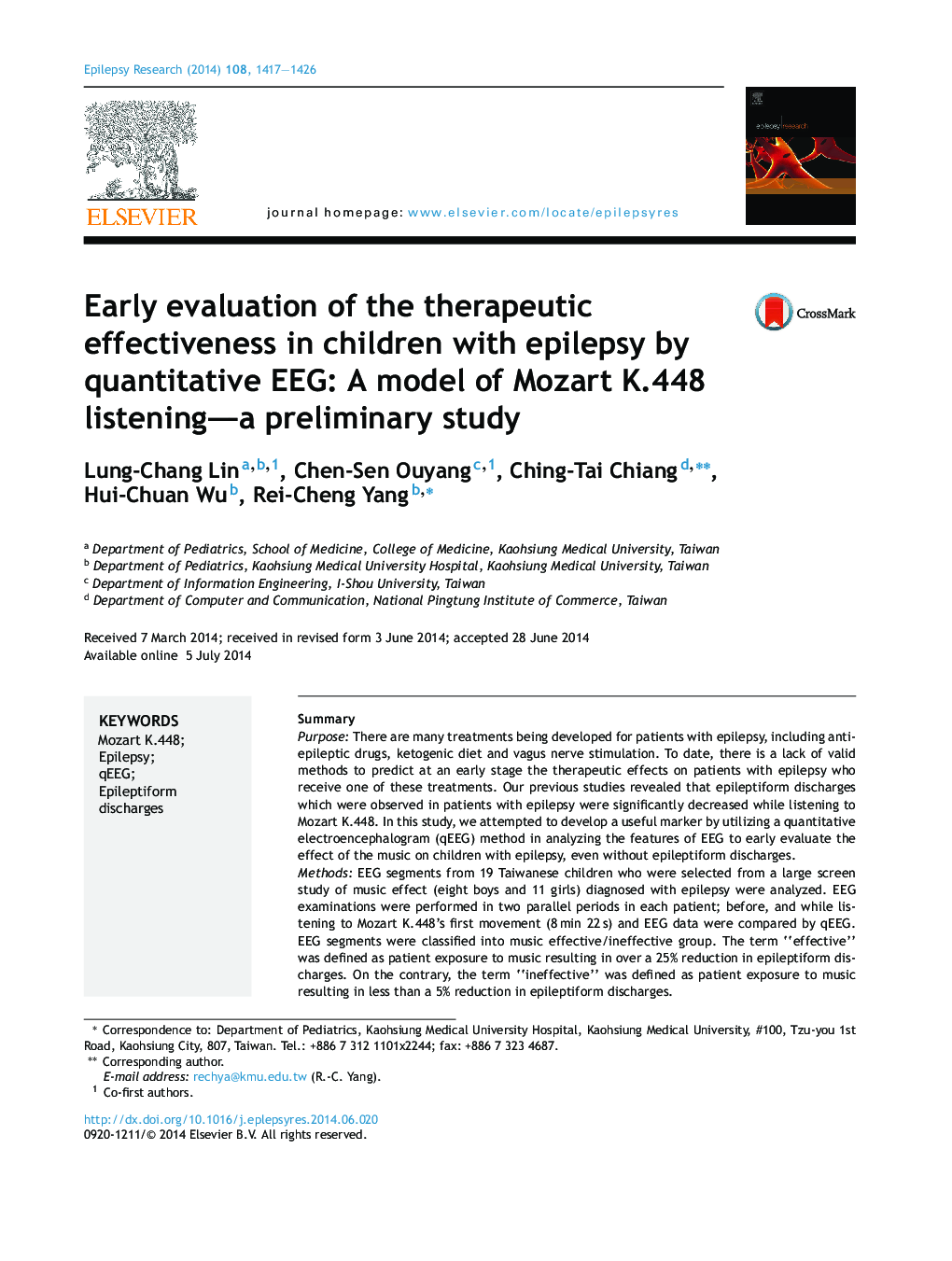| کد مقاله | کد نشریه | سال انتشار | مقاله انگلیسی | نسخه تمام متن |
|---|---|---|---|---|
| 3052024 | 1186071 | 2014 | 10 صفحه PDF | دانلود رایگان |

• Lack of methods to earlier predict therapeutic effects in patients with epilepsy.
• Epileptiform discharges in patients were decreased when listening to Mozart K.448.
• We developed a model for discriminating music's effectiveness by quantitative EEG.
• The predicting model might apply to other therapies for an early prediction.
SummaryPurposeThere are many treatments being developed for patients with epilepsy, including anti-epileptic drugs, ketogenic diet and vagus nerve stimulation. To date, there is a lack of valid methods to predict at an early stage the therapeutic effects on patients with epilepsy who receive one of these treatments. Our previous studies revealed that epileptiform discharges which were observed in patients with epilepsy were significantly decreased while listening to Mozart K.448. In this study, we attempted to develop a useful marker by utilizing a quantitative electroencephalogram (qEEG) method in analyzing the features of EEG to early evaluate the effect of the music on children with epilepsy, even without epileptiform discharges.MethodsEEG segments from 19 Taiwanese children who were selected from a large screen study of music effect (eight boys and 11 girls) diagnosed with epilepsy were analyzed. EEG examinations were performed in two parallel periods in each patient; before, and while listening to Mozart K.448's first movement (8 min 22 s) and EEG data were compared by qEEG. EEG segments were classified into music effective/ineffective group. The term “effective” was defined as patient exposure to music resulting in over a 25% reduction in epileptiform discharges. On the contrary, the term “ineffective” was defined as patient exposure to music resulting in less than a 5% reduction in epileptiform discharges.ResultsThere were four global feature descriptors selected for the music effective/ineffective classification. Two descriptors, DecorrTime_avg_AVG and DecorrTime_std_AVG, were related to the EEG feature “decorrelation” whereas the other two descriptors, RelPowGamma_avg_SNR and RelPowGamma_std_SNR, were related to “relative power of gamma.” There were significantly higher RelPowGamma_std_SNR (0.190 ± 0.133 vs. −0.026 ± 0.119, p = 0.0029), DecorrTime_std_AVG (0.005 ± 0.004 vs. 0.0003 ± 0.0016, p = 0.0055), DecorrTime_avg_AVG (0.005 ± 0.005 vs. −0.002 ± 0.008, p = 0.0179), and RelPowGamma_avg_SNR (0.176 ± 0.219 vs. −0.078 ± 0.244, p = 0.0222) in the effective group than in the ineffective group. The precision rate of classification was 0.953.ConclusionsUsing qEEG, we have developed a useful model for predicting therapeutic effectiveness of music in patients with epilepsy. Among the limited number of patients, the tool is of potential to predict the effectiveness in patients even without epileptiform discharges. It is worthwhile in the application of other therapeutic model.
Journal: Epilepsy Research - Volume 108, Issue 8, October 2014, Pages 1417–1426